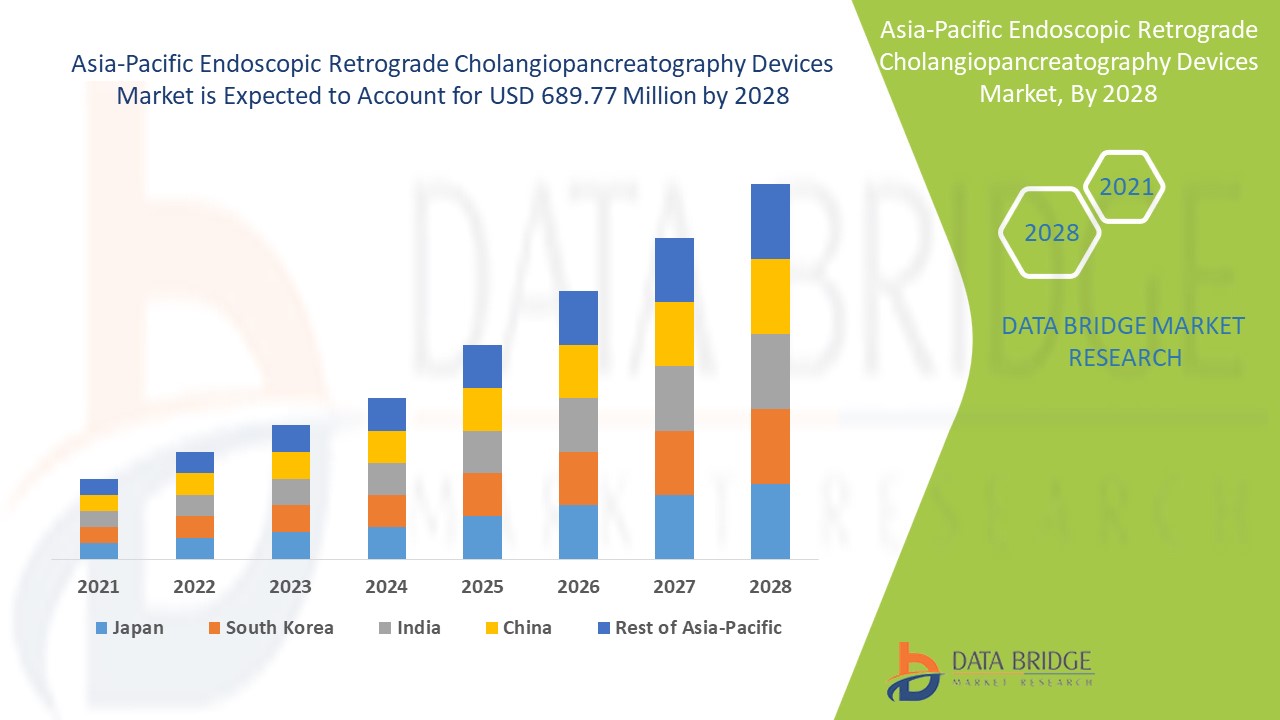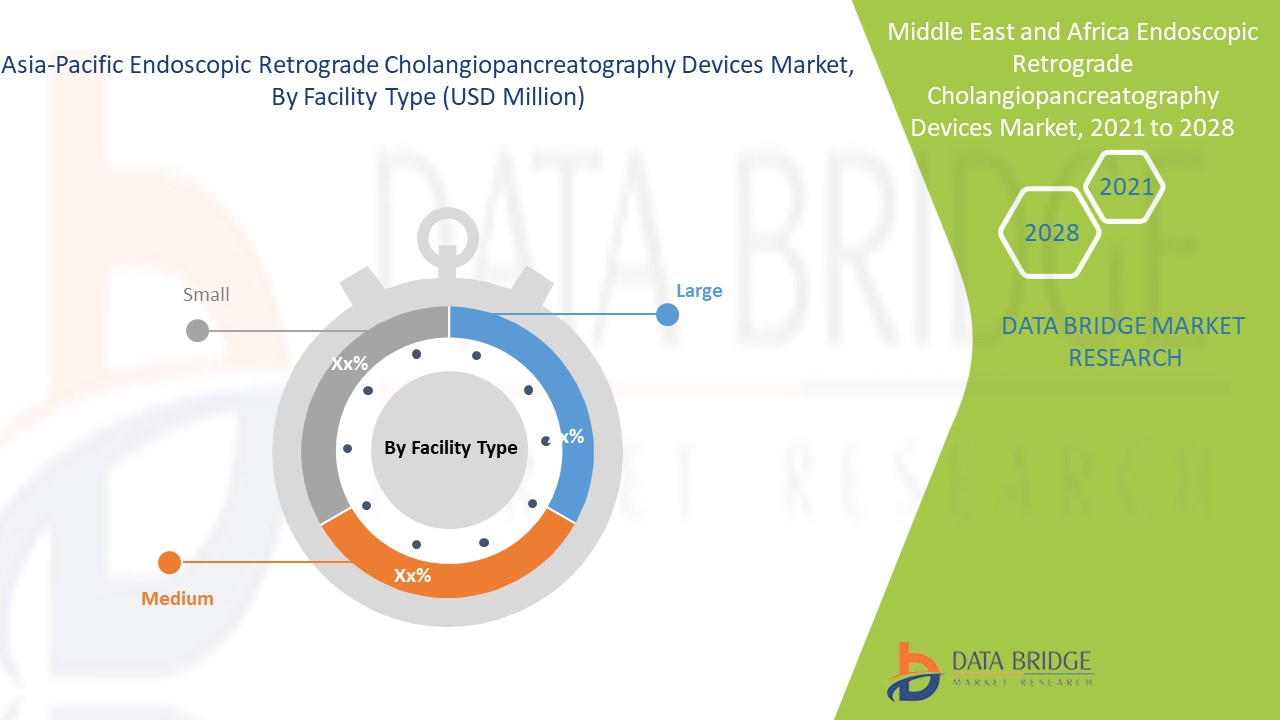Asia-Pacific Endoscopic Retrograde Cholangiopancreatography Devices Market, By Product Type (Endotherapy Devices, Endoscopes, Imaging Devices, and Others), Modality (Single Use, Standalone, Handheld), Procedure (Biliary Sphicterectomy, Biliary Stenting, Biliary Dilation, Pancreatic Duct Stenting, Pancreatic Sphicterectomy), Application (Bile Duct, Pancreas, Gall Bladder, Liver and Others), End User(Hospitals, Ambulatory Surgical Center, Diagnostic Laboratories and Others), Facility Type (Large, Medium and Small), Distribution Channel (Direct Tenders, Third Party Distribution, and Retail Sales). Country (Japan, China, South Korea, India, Australia, Singapore, Thailand, Malaysia, Indonesia, Philippines, Vietnam, Rest of Asia-Pacific) Industry Trends and Forecast 2028.

Market Analysis and Insights: Asia-Pacific Endoscopic Retrograde Cholangiopancreatography Devices Market

The Asia-Pacific endoscopic retrograde cholangiopancreatography devices market is expected to grow in the forecast period of 2021 to 2028. Data Bridge Market Research analyses that the market is growing with a CAGR of 6.9% in the forecast period of 2021 to 2028 and is expected to reach USD 689.77 million by 2028 from USD 418.33 million in 2020. The high prevalence of pancreatic and biliary diseases is likely to be the major drivers that propel the market's demand in the forecast period.
The high prevalence of pancreatic and biliary diseases, increasing research and development by key industry players for the development of innovative devices, support by the government, and increasing healthcare infrastructure are driving the market's growth. However, the stringent government approval for new devices may act as a restraint for the market's growth. The advanced methodologies present in the field also act as an opportunity for the global endoscopic retrograde cholangiopancreatography devices market. The side effects associated with the procedure are acting as a challenge for the market.
The Asia-Pacific endoscopic retrograde cholangiopancreatography devices market report provides details of market share, new developments, and impact of domestic and localized market players, analyses opportunities in terms of emerging revenue pockets, changes in market regulations, product approvals, strategic decisions, product launches, geographic expansions, and technological innovations in the market. To understand the analysis and the market scenario, contact us for an Analyst Brief. Our team will help you create a revenue impact solution to achieve your desired goal.

Asia- Pacific Endoscopic Retrograde Cholangiopancreatography Devices Market Scope and Market Size

Asia-Pacific endoscopic retrograde cholangiopancreatography devices market is categorized into seven notable segments which are based on product type, modality, procedure, application, end user, facility type, and distribution channel. The growth among segments helps you analyze niche pockets of growth and strategies to approach the market and determine your core application areas and the difference in your target markets.
- On the basis of product type, the Asia-Pacific endoscopic retrograde cholangiopancreatography devices market is segmented into endotherapy devices, endoscopes, imaging devices, and others. In 2021, endotherapy devices segment is expected to dominate the market due to the availability of various types of equipment, and big players are manufacturing these types of equipment in the Asia-Pacific market.
- On the basis of modality, the Asia-Pacific endoscopic retrograde cholangiopancreatography devices market is segmented into single-use, standalone, and handheld. In 2021, the single-use segment is expected to dominate the market because there is no risk of disease transmission from one patient to another while using single-use devices.
- On the basis of procedure, the Asia-Pacific endoscopic retrograde cholangiopancreatography devices market is segmented into biliary sphincterotomy, biliary stenting, biliary dilation, pancreatic duct stenting, and pancreatic sphincterotomy. In 2021, the biliary sphincterotomy segment is expected to dominate the market because of the high prevalence of pancreatic tumors in the Asia-Pacific region.
- On the basis of application, the Asia-Pacific endoscopic retrograde cholangiopancreatography devices market is segmented into the bile duct, pancreas, gall bladder, liver, and others. In 2021, the bile duct segment is expected to dominate the market because of the high prevalence of biliary diseases across the Asia-Pacific region.
- On the basis of end user, the Asia-Pacific endoscopic retrograde cholangiopancreatography devices market is segmented into hospitals, ambulatory surgical centers, diagnostic laboratories, and others. In 2021, the hospital's segment is expected to dominate the market due to the growing emphasis on strategic initiatives (such as acquisitions, partnerships, and collaborations) by medical device companies to expand their capabilities in the Asia-Pacific endoscopic retrograde cholangiopancreatography devices market.
- On the basis of facility type, the Asia-Pacific endoscopic retrograde cholangiopancreatography devices market is segmented into large, medium, and small. In 2021, a large segment is expected to dominate the market due to the high demand for endoscopic retrograde cholangiopancreatography procedures in the large facilities in the Asia-Pacific.
- On the basis of distribution channel, the Asia-Pacific endoscopic retrograde cholangiopancreatography devices market is segmented into direct tenders, third-party distribution, and retail sales. In 2021, a direct tender segment is expected to dominate the market because of significant growth due to the overall control over sales and revenue processes and direct interactions with customers.
Asia-Pacific Endoscopic Retrograde Cholangiopancreatography Devices Market Country Level Analysis
The Asia-Pacific endoscopic retrograde cholangiopancreatography devices market is analyzed, and market size information is provided by product type, modality, procedure, applications, end user, facility type, and distribution.
The countries covered in the Asia-Pacific endoscopic retrograde cholangiopancreatography devices market report are Japan, China, India, South Korea, Australia, Singapore, Indonesia, Philippines, and Rest of Asia-Pacific.
Asia-Pacific is expected to grow with the highest CAGR in the forecasted periods. In Asia-Pacific countries, there is a surge in pancreatic and biliary diseases with increasing healthcare infrastructure. Japan is expected to dominate in the market in the Asia-Pacific market. Japan is one of the leading countries to inculcate the endoscopic retrograde cholangiopancreatography devices market.
The country section of the report also provides individual market impacting factors and changes in regulation in the market domestically that impact the current and future trends of the market. Data points such as new sales, replacement sales, country demographics, regulatory acts, and import-export tariffs are some of the major pointers used to forecast the market scenario for individual countries. Also, the presence and availability of Asia Pacific brands and their challenges faced due to large or scarce competition from local and domestic brands, the impact of sales channels are considered while providing forecast analysis of the country data.
The Presence of Advanced Technology and Strategic Initiatives Taken by Players are Creating New Opportunities in the Asia-Pacific Endoscopic Retrograde Cholangiopancreatography Devices Market
The Asia-Pacific endoscopic retrograde cholangiopancreatography devices market provides you with a detailed market analysis for every country's growth in a particular industry with ERCP product sales, the impact of advancement, and changes in regulatory scenarios with support for the market. The data is available for the historical period 2010 to 2019.
Competitive Landscape and Europe Endoscopic Retrograde Cholangiopancreatography Devices Market Share Analysis
Asia-Pacific endoscopic retrograde cholangiopancreatography devices market competitive landscape provides details by the competitor. Details included are company overview, company financials, revenue generated, market potential, investment in research and development, new market initiatives, production sites and facilities, company strengths and weaknesses, product launch, product trials pipelines, product approvals, patents, product width, and breadth, application dominance, technology lifeline curve. The above data points are only related to the company's focus on the endoscopic retrograde cholangiopancreatography devices market.
The major companies providing the Asia-Pacific endoscopic retrograde cholangiopancreatography devices are Olympus Corporation, Boston Scientific Corporation, Medtronic, BD, Ambu Inc., CONMED Corporation, HOBBS MEDICAL INC., FUJIFILM Corporation, TeleMed Systems Inc., Merit Medical Systems, Cook, KARL STORZ SE & Co. KG, Johnson & Johnson Services, Inc., HOYA Corporation, STERIS, Shaili Endoscopy, Hospiline Equipments among others.
DBMR analysts understand competitive strengths and provide competitive analysis for each competitor separately.
The strategic initiatives by market players and new technological advancements for endoscopic retrograde cholangiopancreatography devices are bridging the gap for various treatments.
For instance,
- In January 2021, STERIS announced that it has entered into an agreement to acquire Cantel, which is a global provider of endoscopy products. The acquisition will help the company to expand its endoscopy product portfolio
- In October 2020, Olympus Corporation announced that it had launched two ERCP stone management devices, StoneMasterV and VorticCatrchV endotherapy devices, which will increase efficiency in bile duct stone management and has helped the company to generate revenue further
Collaboration, joint ventures, and other strategies by the market player enhance the company’s impression in the endoscopic retrograde cholangiopancreatography devices market, which also benefits the organization to improve their sales growth.
SKU-
SKU-

